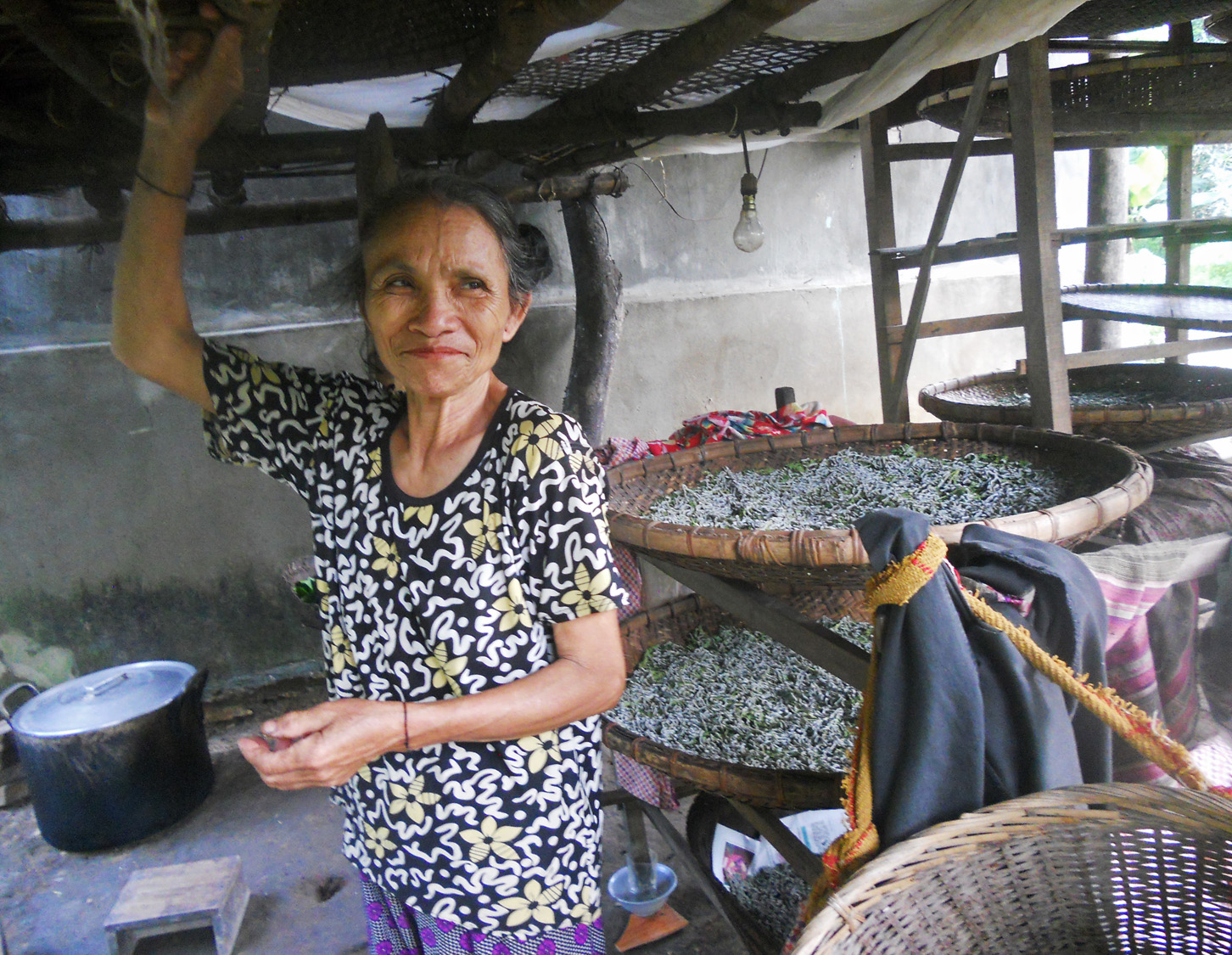

High-yield crops help Vietnamese farmers

Like many Vietnamese farmers, Lang Thi Kieu, a widow who lives with her two sons and daughter-in-law, struggles to make ends meet. Farming doesn’t produce enough to support her family, so she supplements her income with weaving -- but the silk she needs to make her crafts is expensive.
Now Mrs. Kieu is raising her own silkworms with help from an MDG-F-funded programme to boost rural incomes. The initiative is providing some 200 households with a high-yielding variety of mulberry -- which silkworms eat -- that produces trees and leaves two to three times larger than traditional varieties.
"[These] allow me to produce sufficient silk yarn for the family weaving activities,” says Mrs. Kieu, who grows her mulberry trees on a 600 square meter plot along the riverbank. “I save a lot of money, as otherwise I would had to purchase the silk yarn. I consequently sell the woven fabric locally, which contributes to the family income."
Boosting silk production
The new mulberry trees make enough leaves to feed one round of yellow silk worms, producing 11 kilograms of cocoons, which, in turn, generate about 1.1 kilograms of silk yarn worth about VND 715,000 ($ 34) -- half the average monthly wage. The trees, which can be harvested six months after planting, feed six to eight cycles of silkworms a year, generating the equivalent of three to four months’ average income for Mrs. Kieu’s family.
Despite a huge drop in its poverty rate over the last 15 years, Vietnam continues to struggle with significant inequalities, particularly in rural areas. This initiative is part of the MDG-Fund’s work to reduce these inequalities, improve livelihoods for the world’s most marginalized citizens and help countries like Vietnam reach the anti-poverty Millennium Development Goals.
The UN Joint Programme “Green production and trade to increase income and employment opportunities for the rural poor” targets about 4,800 farming and craft-producing households in four northern provinces of Viet Nam, including 1,400 beneficiaries from disadvantaged ethnic minority groups.
Improving value chains
The programme's approach is to develop better integrated, pro-poor, and environmentally sustainable “green” value chains in the production of bamboo/rattan, sericulture (raising of silkworms) and weaving, sea grass, lacquerware, and handmade paper. The goal is to enable poor growers, collectors and producers to improve their products and link these to more profitable markets.
In the sericulture initiative, demonstration sites were prepared in the villages concerned to show best practices in the cultivation of mulberry trees and to encourage local people to grow mulberry. The programme provided silkworm eggs as well as technical guidance on the use of fertilizer while minimizing the use of environmentally-damaging pesticides.
Similarly, the programme has introduced rattan of the high-yield ‘K83’ variety to more than 300 beneficiary farming households. Practical Farmer Fields Schools have been organized for farmers, and public-private partnerships have emerged that provide further support to growers. The programme has also provided technical training to some 150 farming households and local staff on the sustainable exploitation of wildly growing Lung bamboo, which is being depleted due to over-harvesting.
Mr. Hoang Binh Thuy, chairman of his commune’s agricultural services cooperative, says that he and his fellow-farmers are very grateful for the mulberry seedlings and training on mulberry plantation that they have received from the joint programme.
“People are very excited with the VH13 new mulberry variety because it brings high yield and quality compared with the old mulberry variety,” he says. “The VH13 mulberry tree is very suitable and grows very well and generates a good quality leaf for silkworm raising."
Helping Vietnam’s rural poor
The joint programme “Green production and trade to increase income and employment opportunities for the rural poor” works to improve livelihoods for raw material growers and collectors and handicrafts producers in four northern provinces of Vietnam. It benefits 4,800 poor farming and craft-producing households and targets communities that have a high incidence of poverty, especially among ethnic minorities; a concentration of raw materials and local production of crafts; and a possibility to build synergies with past and ongoing development activities.
The programme, a collaboration between the Vietnamese government and the ITC, UNCTAD, FAO, UNIDO and ILO, disproportionally benefits women, as they are traditionally more engaged with craft production. As such, the programme contributes directly to the achievement of the Millennium Development Goals of reducing poverty and hunger and increasing gender equality and environmental sustainability.